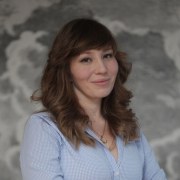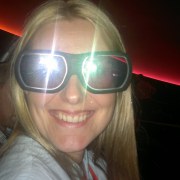Know and understand your customer. And deliver?
In this session, professionals from different science centres and museums will share how they use empirical customer insights in their marketing-communication. They will explain how they learn about their visitors’ needs, expectations and wishes and how they transform this knowledge into catchy promotion campaigns.
Marketers believe that the tastier the worm, the more fish you catch. We do know a lot about the offer side (the worm) – the contents of our public offer. On the other hand, by conducting surveys and evaluations, we have gained insights on the demand side, too – the motives of our visitors (or fish). In marketing-communication, we focus and build on these motives: making the worm tasty for the fish, rather than pleasing the fisherman. In this session we focus on the qualities of the worm, based on empirical data about the fish.
Facilitator
Head Marketing and Partnerships
Swiss Science Center Technorama
Session legacy
For a reverse session, the presentations of the speakers were too long. I gave them five minutes each, but they needed up to 12 minutes. A trick task, it seems.
For next year's sessions, I'd like to try the following: a combined Pecha Kucha / Reverse session. Speakers have max. 15 slides and exactly five minutes.
Session speakers
Copernicus Science Centre
,,The woods of natural phenomena" that is what Fran Oppenheimer used to call his ,,Exploratorium". So are Science Centres now still the woods of natural phenomena? Do we let our visitors just come to wander and are we able to just let the interst for science naturally grow in them?How do exibition developers look at this? And what money has to do with it all? The fact that we need to earn on tickets make us very aware of what the audience wants and needs. We collect the data and we are trying to work out marketing measures for attracting visitors. But does it help? Or at the end of the day is the gut feeling really importnant. At the session I would like to talk a little bit about the data that we can gather and compare it with the ,,romantic view" of a Science Centre I still have, and than in the end discuss and than in the end talk about ideal realationship between a marketer and the exhibit developer in a science Centre. This will be data vs feeling talk ;)
Development & Experience Design
Museon is a lively social hub in The Hague, the international city of peace and justice. As a museum with a go-ahead, inclusive image and approach, the Museon sees it as part of it's mission to bridge the gap between the international city on the one hand and "ordinary' citizens on the other. Marketing and communication are based on data and visitor research, we'll share some of our new insights.
Director of Communications and Services
Heureka’s brand renewal was made in 2017. In my presentation I will tell how we used the visitor survey data and customer insights in that work and how the customer insights affected the decision we made with the new brand image. I will also show some results we got after the brand renewal: what was the attention value of the new brand and marketing campaign after the renewal. We believe that in branding and marketing it is very important to understand the visitors and their needs and desires. But how to get and use the valid customer data in our work on daily basis is a good question.
Head Marketing and Partnerships
Swiss Science Center Technorama
After doing some serious surveys and evaluations at the Swiss Science Center Technorama in the last years, we’ve learned that being aware of our visitors’ needs, expectations, wants and motives actually means to deal with their own agenda. Parents want to do something together with their children. Professional and hobbyist visitors want to confirm their preconceived opinions and beliefs. Finally, teachers are looking for short cuts adding to the curriculum in class. Visitors have their own agenda and optimize it according to what they consider a reasonable ROI. Visitors are not only spending money to pay the entry fee. They are also investing time and attention.
In marketing-communication, we simply want to apply our knowledge about visitors in visuals and messages. Bridging “offer” and “demand” therefore means: the closer we can relate our galleries, workshops and special exhibitions to the needs, expectations and wants of our visitors, the better.
Jaermuseet is one of the ten regional science centres in Norway, and the science centre has two locations: Vitenfabrikken (the Science Factory) and Vitengarden (the Science Farm) in the Southwest of Norway.
The museum has collected data from visitors for many years, in particular from those that are already visitors of the museum.Having all this data is great – but how do we actually implement the data into how we work with branding and marketing strategies and campaigns? I will share some examples with you – which data we collect, how we have specifically used these data, and the results of the changes we have made.




